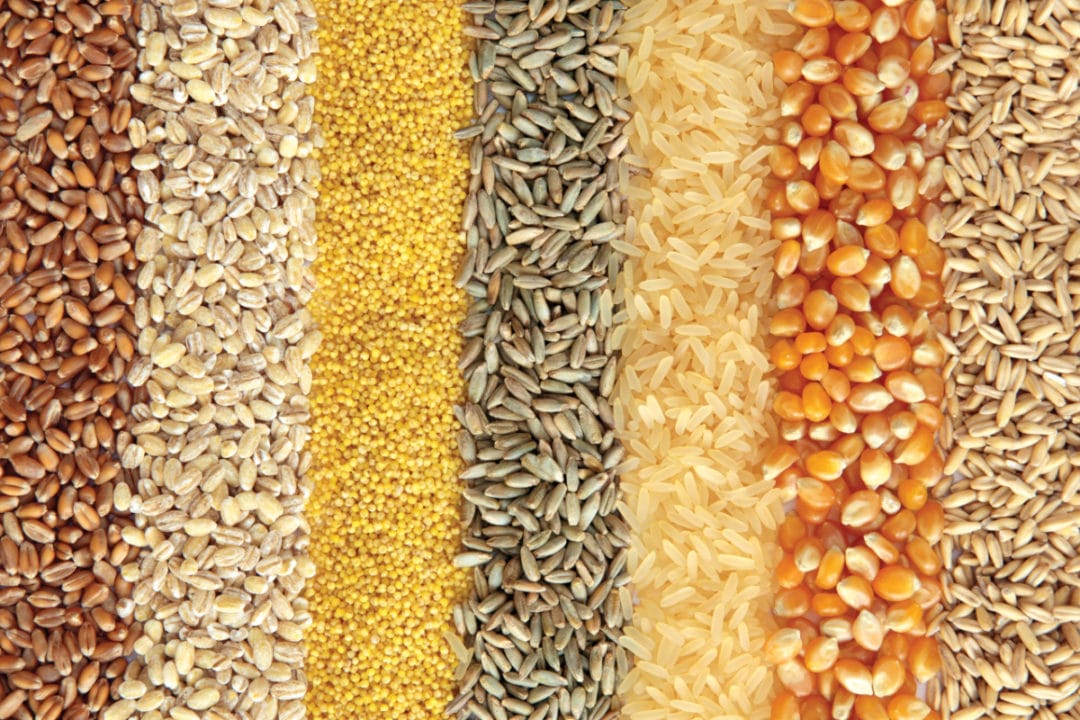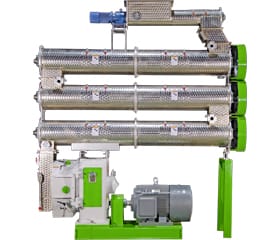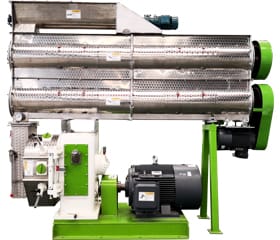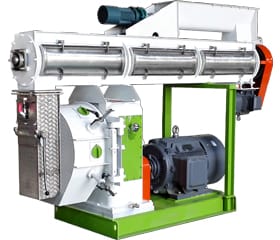Technical points of heat treatment of grain feed
The heat treatment of feed is to add a certain pressure of steam to the material or through a mechanical method, so that the material can absorb a certain amount of water and heat in a short time to produce a larger temperature rise, so that the material is under the action, its structure changes to obtain the required performance. In recent years, methods used for thermal processing of grains or other products (such as oilseeds, pet feed, etc.) include steam flattening and steam tableting, extrusion, granulation, puffing, microwave heating and baking. In some beef cattle fattening farms, methods of processing grains using high-pressure cooking and popping have been tried. However, due to the cost and maintenance of the equipment, its further use is hindered. Existing studies have shown that microwave heating and baking methods have not yet been used, and the puffing method is gradually being eliminated.

1.Steam flattening and steam pressing of cereals
In the 1940s, the steam flattening method has been used. This method can partially kill the weed seeds (early stage). Steam treatment is the process of passing steam to a steam modulator containing grains above the roller mill. In the ordinary process, the grains are only subjected to steam treatment for a short time (3~5 min) before being flattened, which usually can only soften the grains, not enough to change the starch granules to any degree. The research results show that, compared with dry rolling, steam flattening improves the production performance of livestock, and can produce larger compressed tablets, and produces less powder. Compared with dry rolling, it improves the physical properties of feed. structure. This is an advantage when feeding high-level grain diets.
The method of steam compression of cereals is similar to that of steam flattening, except that the cereals are subjected to steam treatment in the steam modulator for a longer time (15-30 min), which is usually enough to increase the moisture content of the cereals to 18%-20%. Pressing between the corrugated rollers on the surface after drawing to form a flat sheet. Since the 1960s, the grain steam compression method has been widely used in beef cattle fattening farms. It has been shown that steam compression can increase the feeding value of grain feed by 12% to 15%. The thinner the cereal pellets, the lighter the weight per bushel.
Studies have shown that the thinner the grain is, the faster the starch can be digested in vitro. Steam compression can more effectively destroy the grain starch granules and make the physical texture of the product more ideal. In terms of increasing the rate of weight gain, corn, barley and sorghum after steam compression have very good effects. Although the effect of steam compression on improving the feed conversion efficiency of corn and sorghum is very obvious, for barley, compared with the steam flattening treatment, the effect of steam compression on improving the feed conversion efficiency is not obvious.
2.Pelletizing
Pelletizing is the process of crushing the feed first, and then entering the ring die animal feed pelletizer machine. Through the action of the pressure roller, the material is forced to pass through a thick high-speed rotating ring die with holes. Before pelleting, the feed usually undergoes a certain degree of steam conditioning, but this is not always the case. Animal pellet feed can be made into different diameters, lengths and hardness, and its commercial operation has a history of more than 50 years. Compared with animal powder feed, generally all livestock like the physical properties of pellet feed.
Most poultry feed and pig feed go through the animal feed pelleting process. However, for ruminants that eat high-grain diets, compared with other methods, although pelleting can improve the feed conversion efficiency, the result is not particularly favorable due to the reduced feed intake. Since livestock may refuse to consume powder, pelleting the diet can often achieve good results. The pelleting method is also often used to store low-quality feed. The pellets can mix well with the crushed grains to form a complete feed or feed of the same texture. Supplementary feeds such as protein concentrates are usually pelleted together to feed animals or in windy areas to reduce feeding losses of other forms of feed.
3. Extrusion
The production of extruded grains or other types of extruded feed is accomplished by passing the feed through a machine with a rotating screw, which pushes the feed through a conical head. In this process, the feed is crushed, heated and squeezed to produce a ribbon-shaped product. This process is usually used to make pet feeds of various sizes and shapes. For beef cattle fed high-grain diets, the effect of feeding extruded grains is similar to that of grains processed by other processing methods. Some feed extruders are also used to process whole soybeans or other oilseeds that are fed to livestock. Heat treatment can fully remove the anti-nutritional factors in soybean or other legume seeds. The feed extruder machine can also be widely used in processing food for humans and pets, as well as processing oilseed products after fat extraction.
4. Puffing, microwave heating and baking
The more familiar expanded corn is a product made by instantaneous expansion of corn by drying and heating (caused by changing water from liquid to gas) and destroying the endosperm of the grain. This process can improve the utilization of starch in the intestines and rumen, but reduces the density (weight per unit volume) of the feed. Therefore, the extruded feed is usually compressed before feeding to reduce its volume. Microwave heating is actually similar to puffing, except that its heat is provided in the form of infrared energy. Roasting is to roast the grains to make the grains expand to a certain extent by direct heating, so that the materials have good palatability. However, this process has not been accepted by most livestock breeders.
5. Advantages and disadvantages of heat treatment of grain feed
Heat treatment of grain feed can improve the quality of feed, increase the hardness of grain feed and its stability in water, soften tissues, improve the appearance and color of feed, play a role in sterilization and disinfection, and facilitate the digestion, absorption and utilization of feed by the animal body. Increased feed remuneration. But it will also produce some negative effects, such as a certain destructive effect on vitamins and enzymes, because vitamins and enzymes are very sensitive to temperature during heat treatment.
【Related info about animal feed processing methods】
1.Complete Rabbit feed processing method
2.Complete Cattle feed processing method
3.Complete Pig feed pellet processing method
4.Complete Chicken poultry feed processing method
5.Complete Fish feed pellet processing method
6.Complete Shrimp feed processing method
7.Complete Sheep pellet feed processing method
8.Complete Camel pellet feed processing method
9.Premix feed processing method
10.Complete Horse pellet feed processing method
......
If you want to built one complete pellet production line in your country, pls send the inquiry to us. We will customized design according to your requirement.



